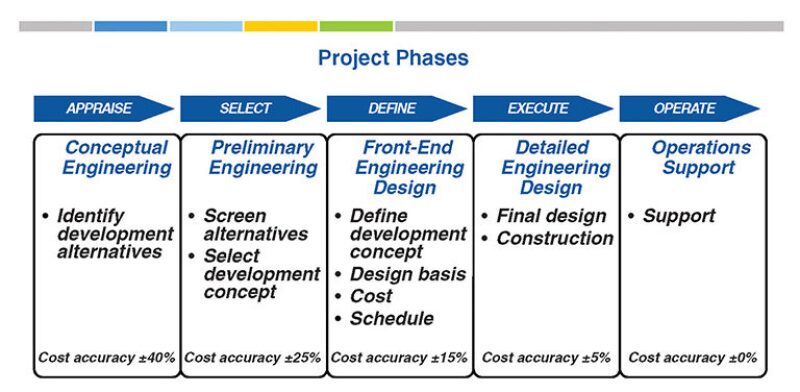Facilities engineering has grown with the industry’s advance into deep water and the development of complex subsea systems to produce the resources found there.
“In terms of developing subsea equipment, there was always a lag when compared to drilling capability in deepwater areas,” said Bill Kinney, director of engineering at Technip. Around the early 2000s, subsea technology caught up. “The high-rate wells being drilled in the Gulf of Mexico and by Petrobras offshore Brazil really made it possible,” Kinney said. “We have closed the gap between deepwater drilling capacity and facilities construction,” he added.
Kinney spoke from the first of five Expanding Facilities Knowledge workshops held in June by the Society of Petroleum Engineers Gulf Coast Section Projects, Facilities, and Construction study group. The session presented considerations and data that are addressed in field development strategy.
How to Develop an Oil Field
The first requirement is land acquisition. “It takes acreage to develop an oil field,” Kinney said. The current US administration is preparing a new lease sale in the US Gulf of Mexico. According to Kinney, the terms of a given lease are important for facilities design teams to know. Lease sales operate on a tax and royalty system in the US. Other regions may operate differently, such as with a production sharing agreement. “Development teams need to know the lease terms as it may influence engineering decisions,” Kinney said.
Once a lease has been secured, the project enters the exploration mode. Seismic data acquisition and interpretation are necessary to identify various traps where oil and gas may be present. Future field development scenarios will rely largely on the targets identified in this process.
The discovery phase is possibly the most important part. Once exploratory drilling is completed and oil or gas is proven, the facilities engineer’s job comes into focus, Kinney said. “While everyone is patting one another on the back, a discovery means we have work to do,” he said.
Many parameters come into play when designing front-end engineering. New discoveries are often in remote areas and in deep water. Once a discovery is made, reality often sets in. Producing the necessary quantity by a targeted date becomes the focus for facilities design. Flow assurance must be guaranteed. “Facilities specialists need good samples to answer questions about how to develop a specific play,” Kinney said.
The typical offshore project today is carried through a phase data approach (Fig. 1). “It takes everyone to make a project successful,” Kinney said.

Scheduling also can prove to be challenging. “Different time horizons can change project parameters,” Kinney added. Depending on how many companies are involved and how the arrangement is split among them, a project can become cumbersome within competing timelines. Kinney said that a proactive engagement with the public community and local governments also can help avoid surprises and possible setbacks.
A Clean Slate
“When you get to front-end loading (FEL), early on we have a clean sheet of paper,” Kinney said. The early decision phase on a project has a great influence on what options stay on the table. “Typically, you look at multiple concepts and it does not lock to the costs,” Kinney said. As facilities specialists gain more information, the multiple options begin narrowing. Decisions are made that firm up around the actual outcome of the project. “Facilities engineers lose influence over the design phase toward the end, and even the smallest changes can have greater impact in the final stage of a project,” he said.
Value is derived from picking the right project, and FEL helps in this process. “The highest value for any project is derived from good FEL and project definition and good project execution,” Kinney said. From the appraisal to the operation phase, facilities engineers play a major role in providing value to field development projects.
Stages of Concept SelectionI. Understand the environment
II. Understand the reservoir and quantify uncertainties
III. Understand the drilling
IV. Propose options and examine
V. Commercial analysis
|

